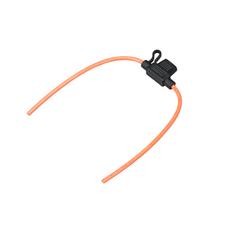Friend has a pamco and we took it of and added to my system including his coil.
No spark so we cut the Electronic Advance off (added mechanical advance) and presto, spark, bike ran and ran and idled great!
Went for a 1/2 hr ride, charging for most part on LED was 13.7 volts and after approx 20 min
raised up to 14.1 to 14.2 volts.I had to stop for a minute and accidentally hit the kill switch and then tried to restart
,bike back fired loud but started and ran second try, strange. All was well and continued on for another 15-20 minutes
and bike ran great. Note, I did notice that on LED the voltage at times would spike or drop to 13.2 from 14.2 volts
When I arrived home I turned bike off then went to restart to move and no go, NO SPARK AGAIN !
I either fried another ignition , bad connection or the backfire with the kill switch created a surge or short.
The inline fuse should help until I have this rectified.

